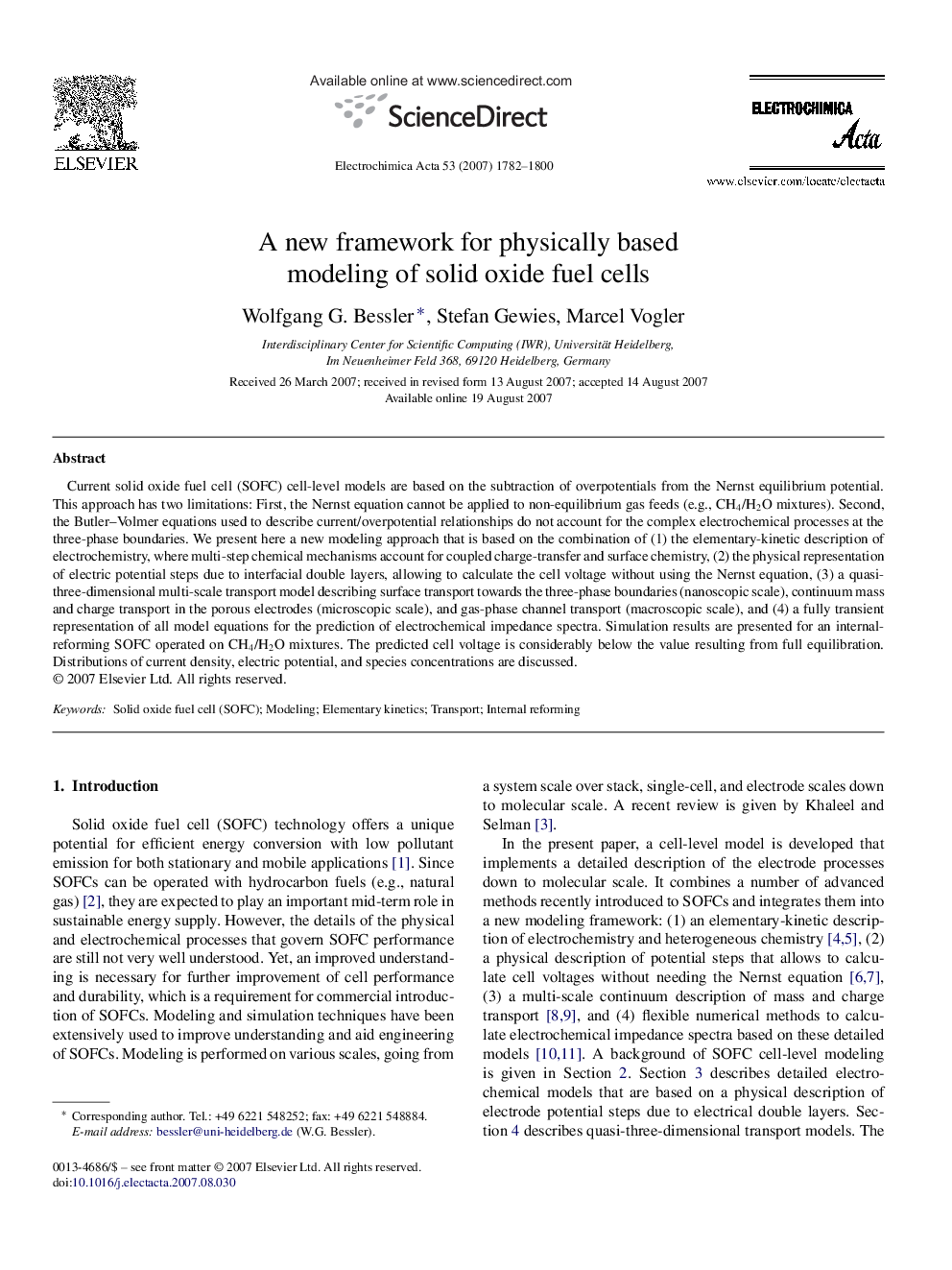| Article ID | Journal | Published Year | Pages | File Type |
|---|---|---|---|---|
| 193713 | Electrochimica Acta | 2007 | 19 Pages |
Current solid oxide fuel cell (SOFC) cell-level models are based on the subtraction of overpotentials from the Nernst equilibrium potential. This approach has two limitations: First, the Nernst equation cannot be applied to non-equilibrium gas feeds (e.g., CH4/H2O mixtures). Second, the Butler–Volmer equations used to describe current/overpotential relationships do not account for the complex electrochemical processes at the three-phase boundaries. We present here a new modeling approach that is based on the combination of (1) the elementary-kinetic description of electrochemistry, where multi-step chemical mechanisms account for coupled charge-transfer and surface chemistry, (2) the physical representation of electric potential steps due to interfacial double layers, allowing to calculate the cell voltage without using the Nernst equation, (3) a quasi-three-dimensional multi-scale transport model describing surface transport towards the three-phase boundaries (nanoscopic scale), continuum mass and charge transport in the porous electrodes (microscopic scale), and gas-phase channel transport (macroscopic scale), and (4) a fully transient representation of all model equations for the prediction of electrochemical impedance spectra. Simulation results are presented for an internal-reforming SOFC operated on CH4/H2O mixtures. The predicted cell voltage is considerably below the value resulting from full equilibration. Distributions of current density, electric potential, and species concentrations are discussed.
